 Search by Keyword
Sign Up Below for our MONTHLY BEATLES TRIVIA QUIZ!
|
"ROCK AND ROLL MUSIC"
(Chuck Berry)
 "England's Phenomenal Pop Combo." This heading graced the front cover of Capitol's first Beatles album "Meet The Beatles!" This phrase was coined by Capitol executives to characterize the sound that the British foursome was delivering. As well-intentioned and accurate as this tag may have been, it wasn't what The Beatles aimed for. "England's Phenomenal Pop Combo." This heading graced the front cover of Capitol's first Beatles album "Meet The Beatles!" This phrase was coined by Capitol executives to characterize the sound that the British foursome was delivering. As well-intentioned and accurate as this tag may have been, it wasn't what The Beatles aimed for.
The hard-edged flamboyant performances they delivered at the Cavern Club in Liverpool and during their long sets in Hamburg, Germany were anything but "pop music." They may have had a love for many kinds of music, but the energy dispensed during those years was the true essence of "rock and roll."
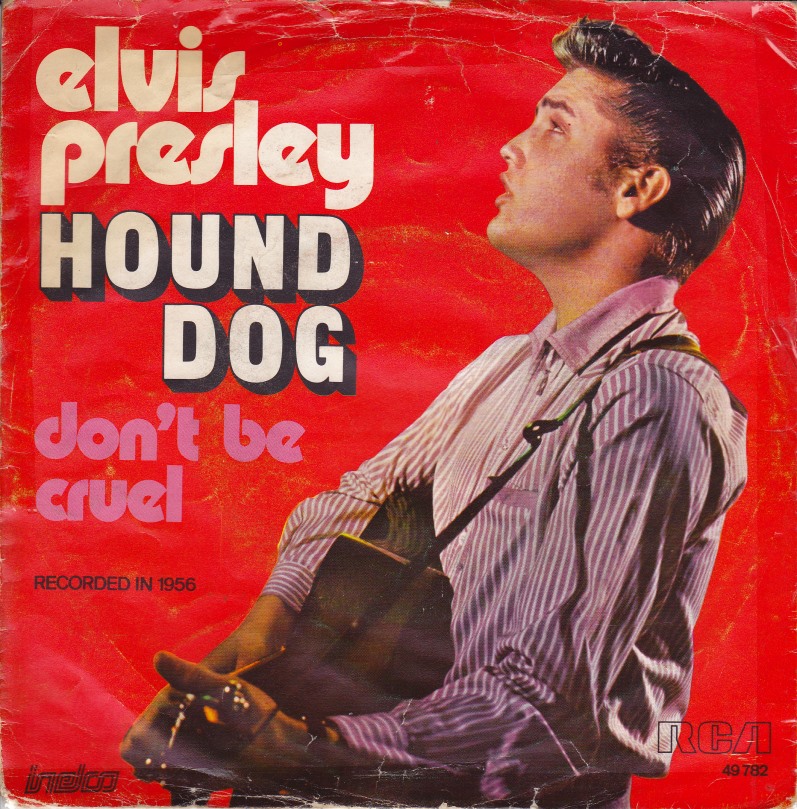 "I'm an Elvis fan because it was Elvis who really got me out of Liverpool," John Lennon stated in 1975. "Once I heard it and got into it, that was life, there was no other thing. I thought of nothing else but rock'n'roll, apart from sex and food and money - but that's all the same thing, really." "I'm an Elvis fan because it was Elvis who really got me out of Liverpool," John Lennon stated in 1975. "Once I heard it and got into it, that was life, there was no other thing. I thought of nothing else but rock'n'roll, apart from sex and food and money - but that's all the same thing, really."
 Rock and roll was everything to John, as it was for the other Beatles. That was why they refused to have the song "How Do You Do It?," as suggested by producer George Martin, released as their first single. "We can't take that song back to Liverpool," Paul McCartney said to George Martin, "we'll get laughed at." Rock and roll was everything to John, as it was for the other Beatles. That was why they refused to have the song "How Do You Do It?," as suggested by producer George Martin, released as their first single. "We can't take that song back to Liverpool," Paul McCartney said to George Martin, "we'll get laughed at."
While The Beatles injected their many musical tastes into their albums throughout their career, "rock and roll" was their main impetus. There was no better way to drive the point home than their choice of Chuck Berry's anthem "Rock And Roll Music" to be included on their fourth British album "Beatles For Sale." The song's inclusion on America's "Beatles '65" album also made it clear to US audiences that they weren't just a "pop combo" anymore.
Songwriting History
"Chuck Berry was another massive influence," reflected Paul McCartney. "We'd go up to John's bedroom with his little record player and listen to Chuck Berry records, trying to learn them." This influenced Lennon's guitar style, as McCartney continues; "John did play some Chuck Berry-style solos, but he gave over the solo chair to George and became known as rhythm guitarist."
 "I learned the solos on 'Johnny B. Goode' and 'Carol'," John relates. "In those days I was very much influenced by Chuck Berry...(He) is one of the all-time great poets; a rock poet, you could call him. He was well advanced of his time, lyric-wise. We all owe a lot to him, including (Bob) Dylan. I've loved everything he's done, ever. He was in a different class from the other performers. He was in the tradition of the great blues artists but he really wrote his own stuff - I know (Little) Richard did, but (Chuck) Berry really wrote stuff. The lyrics were fantastic, even though we didn't know what he was saying half the time." "I learned the solos on 'Johnny B. Goode' and 'Carol'," John relates. "In those days I was very much influenced by Chuck Berry...(He) is one of the all-time great poets; a rock poet, you could call him. He was well advanced of his time, lyric-wise. We all owe a lot to him, including (Bob) Dylan. I've loved everything he's done, ever. He was in a different class from the other performers. He was in the tradition of the great blues artists but he really wrote his own stuff - I know (Little) Richard did, but (Chuck) Berry really wrote stuff. The lyrics were fantastic, even though we didn't know what he was saying half the time."
 Such was the influence Chuck Berry had on The Beatles. His 1956 classic "Roll Over Beethoven" having been recorded in 1963 for their "With The Beatles" album, it was no surprise that they would choose to cover another Chuck Berry anthem when given the opportunity. Such was the influence Chuck Berry had on The Beatles. His 1956 classic "Roll Over Beethoven" having been recorded in 1963 for their "With The Beatles" album, it was no surprise that they would choose to cover another Chuck Berry anthem when given the opportunity.
That opportunity came with the recording sessions for their fourth British album "Beatles For Sale." Having already recorded one album in 1964, they had an obligation to complete a second album that year in time for the Christmas season. Not being able to compose enough material on that short of notice to fill an entire album, they were happy to record their renditions of some of their favorites. "Rock And Roll Music" fit the bill perfectly.
 Chuck Berry became known for composing lyrics that were relevant and entertaining to young white audiences while not alienating black audiences. This formula resulted in nine chart hits between 1955 and 1960, one of which was "Rock And Roll Music" (#8 on the Billboard pop charts). Written approximately in April of 1957, he was singing the praises of the newly-christened popular music of the young generation. While Berry still depicted "rhythm and blues" as the music style-of-choice in "Roll Over Beethoven," the emergence of "rock and roll" on the scene was due for its own anthem. Chuck Berry satisfied that need. Chuck Berry became known for composing lyrics that were relevant and entertaining to young white audiences while not alienating black audiences. This formula resulted in nine chart hits between 1955 and 1960, one of which was "Rock And Roll Music" (#8 on the Billboard pop charts). Written approximately in April of 1957, he was singing the praises of the newly-christened popular music of the young generation. While Berry still depicted "rhythm and blues" as the music style-of-choice in "Roll Over Beethoven," the emergence of "rock and roll" on the scene was due for its own anthem. Chuck Berry satisfied that need.
 Chuck Berry became famous for his examination of the experience of the younger generation, black or white, which resulted in many of his most successful hits, including "School Day," "Sweet Little Sixteen" and "Almost Grown." With "Rock And Roll Music," Chuck Berry strove to epitomize the motivating force behind the youth of that generation. Being one of the catalysts of this genre, he was well equipped to emphasize its features, such as the "back beat," as well as mention the drive of the saxophone and piano in this type of music. Chuck Berry became famous for his examination of the experience of the younger generation, black or white, which resulted in many of his most successful hits, including "School Day," "Sweet Little Sixteen" and "Almost Grown." With "Rock And Roll Music," Chuck Berry strove to epitomize the motivating force behind the youth of that generation. Being one of the catalysts of this genre, he was well equipped to emphasize its features, such as the "back beat," as well as mention the drive of the saxophone and piano in this type of music.
 These lyrics didn't go unnoticed by John Lennon. "In the '50s, when people were virtually singing about nothing, Chuck Berry was writing social-comment songs, with incredible metre to the lyrics," John stated in 1972. "When I hear rock, good rock, of the caliber of Chuck Berry, I just fall apart and I have no other interest in life. The world could be ending if rock'n'roll is playing. It's a disease of mine." These lyrics didn't go unnoticed by John Lennon. "In the '50s, when people were virtually singing about nothing, Chuck Berry was writing social-comment songs, with incredible metre to the lyrics," John stated in 1972. "When I hear rock, good rock, of the caliber of Chuck Berry, I just fall apart and I have no other interest in life. The world could be ending if rock'n'roll is playing. It's a disease of mine."
Recording History
 October 18th, 1964 was a hectic day in the recording studio for The Beatles. This was a day off during their UK concert tour which started on October 9th. Since the deadline for completing their "Beatles For Sale" album was getting very close, they crammed this Sunday session in before they had to leave for Edinburgh, Scotland the next day. October 18th, 1964 was a hectic day in the recording studio for The Beatles. This was a day off during their UK concert tour which started on October 9th. Since the deadline for completing their "Beatles For Sale" album was getting very close, they crammed this Sunday session in before they had to leave for Edinburgh, Scotland the next day.
This session in Studio Two of EMI ran more than nine hours long and resulted in seven new Beatles songs from start to completion, in addition to a couple of edit pieces for "Eight Days A Week" at the beginning of the session. The session began at 2:30 pm and lasted a little past 11:30 pm in the evening.
 After the above mentioned edit pieces were completed, they spent considerable time completing four new songs before taking a tea break and conversing with their publisher Dick James. With the break over at approximately 10 pm, it was now time to go back to work. "They had gotten all the hard work behind them and now had to knock off three more songs before it got too late," engineer Geoff Emerick relates, "because they were due up in Scotland the next day to resume touring. In essence, the rest of the session was a live performance, very much like their debut album." After the above mentioned edit pieces were completed, they spent considerable time completing four new songs before taking a tea break and conversing with their publisher Dick James. With the break over at approximately 10 pm, it was now time to go back to work. "They had gotten all the hard work behind them and now had to knock off three more songs before it got too late," engineer Geoff Emerick relates, "because they were due up in Scotland the next day to resume touring. In essence, the rest of the session was a live performance, very much like their debut album."
 The last hour and a half of the session was taken up with recording three of the group's favorite cover songs. After completing the recording George Harrison's enthusiastic rendition of "Everybody's Trying To Be My Baby," John Lennon stepped up to the microphone for a single take of "Rock And Roll Music." No overdubs were needed, not even for the vocals. The echo delay used on George's previous track was used here as well which eliminated the need for double-tracking. The two minutes and thirty seconds needed to record this song occurred around 11 pm that evening. The last hour and a half of the session was taken up with recording three of the group's favorite cover songs. After completing the recording George Harrison's enthusiastic rendition of "Everybody's Trying To Be My Baby," John Lennon stepped up to the microphone for a single take of "Rock And Roll Music." No overdubs were needed, not even for the vocals. The echo delay used on George's previous track was used here as well which eliminated the need for double-tracking. The two minutes and thirty seconds needed to record this song occurred around 11 pm that evening.
 One controversial aspect about this song is its instrumentation. This controversy centers around the identity of the pianist on this song. Most writers take the stance that George Martin played the piano as he did on previous Beatles recordings, such as "Misery" and "Long Tall Sally." This conclusion is drawn no doubt from Mark Lewisohn's "The Beatles Recording Sessions," which states this as being the case. One controversial aspect about this song is its instrumentation. This controversy centers around the identity of the pianist on this song. Most writers take the stance that George Martin played the piano as he did on previous Beatles recordings, such as "Misery" and "Long Tall Sally." This conclusion is drawn no doubt from Mark Lewisohn's "The Beatles Recording Sessions," which states this as being the case.
 Another theory is presented in the liner notes to the British "Beatles For Sale" album, written by Derek Taylor. He claims that the piano part was recorded with John, Paul and George Martin all sitting at the piano at the same time. While this interesting claim seems to be an eyewitness account, it obviously would have had to have been done as an overdub, while most sources claim there weren't any. Another theory is presented in the liner notes to the British "Beatles For Sale" album, written by Derek Taylor. He claims that the piano part was recorded with John, Paul and George Martin all sitting at the piano at the same time. While this interesting claim seems to be an eyewitness account, it obviously would have had to have been done as an overdub, while most sources claim there weren't any.
 Another theory is made by someone who is documented to have actually been there on that day. Second engineer Geoff Emerick, in his book "Here, There And Everywhere," states this about the recording of this song: Another theory is made by someone who is documented to have actually been there on that day. Second engineer Geoff Emerick, in his book "Here, There And Everywhere," states this about the recording of this song:
"Then with time running short, Paul moved over to the piano, where he pounded out a rollicking version of Chuck Berry's 'Rock And Roll Music.' The entire song, including John's scorching vocal, was performed live, with George Harrison playing Paul's Hofner bass."
 It can be claimed that this account is valid due to the fact that the bass work is quite simplistic as opposed to the busy bass lines Paul was known to concoct. (Note Paul's bass work on similar rockers like "Boys" and "I Saw Her Standing There.") Not to be overlooked is Paul's piano work as it appeared on Beatles songs prior to this date, such as on "Little Child" and the recently recorded "She's A Woman." Adding to this is the proven fact that Geoff Emerick was indeed present on this day, although many dispute the accuracy of his recollection because of him having Howard Massey as a co-writer for his book "Here, There And Everywhere" and, arguably, Emerick having a flawed memory. Many claim that, since more than one guitar is discernable on the stereo mix (John's in the right channel and George's in the left channel), George Martin should indeed be credited as pianist on this song. It can be claimed that this account is valid due to the fact that the bass work is quite simplistic as opposed to the busy bass lines Paul was known to concoct. (Note Paul's bass work on similar rockers like "Boys" and "I Saw Her Standing There.") Not to be overlooked is Paul's piano work as it appeared on Beatles songs prior to this date, such as on "Little Child" and the recently recorded "She's A Woman." Adding to this is the proven fact that Geoff Emerick was indeed present on this day, although many dispute the accuracy of his recollection because of him having Howard Massey as a co-writer for his book "Here, There And Everywhere" and, arguably, Emerick having a flawed memory. Many claim that, since more than one guitar is discernable on the stereo mix (John's in the right channel and George's in the left channel), George Martin should indeed be credited as pianist on this song.
 Some have also objected to the suggestion that George Harrison is here cited by Emerick as playing Paul's left-handed bass guitar, this feat being cumbersome and, as some assert, impossible for a right-handed guitarist to do. However, note this quote from Mark Lewisohn's 2013 book "Tune In" in which he outlines the group's instrumentation during their 1962 performances of the song "Peppermint Twist." "Pete (Best) came out front to sing it and do a little dance while Paul relished a few minutes behind the drums and George picked up Paul's left-handed bass and tried to find the notes as a right-hander. It was a cabaret moment." Therefore, not only was it indeed possible for George to play Paul's left-handed bass, but he had gained practice over the years in doing just that. Some have also objected to the suggestion that George Harrison is here cited by Emerick as playing Paul's left-handed bass guitar, this feat being cumbersome and, as some assert, impossible for a right-handed guitarist to do. However, note this quote from Mark Lewisohn's 2013 book "Tune In" in which he outlines the group's instrumentation during their 1962 performances of the song "Peppermint Twist." "Pete (Best) came out front to sing it and do a little dance while Paul relished a few minutes behind the drums and George picked up Paul's left-handed bass and tried to find the notes as a right-hander. It was a cabaret moment." Therefore, not only was it indeed possible for George to play Paul's left-handed bass, but he had gained practice over the years in doing just that.
 Nonetheless, because of the presence of two guitars in the stereo mix, it must be asserted that, at least in this case, Geoff Emerick's recollections must have been incorrect. Both John and George must have played guitar during this live recording while, it is assumed, George Martin played piano onto the same track as John's lead vocal, which was centered in the stereo mix. Paul, therefore, can easily be credited as bass guitarist as usual. Nonetheless, because of the presence of two guitars in the stereo mix, it must be asserted that, at least in this case, Geoff Emerick's recollections must have been incorrect. Both John and George must have played guitar during this live recording while, it is assumed, George Martin played piano onto the same track as John's lead vocal, which was centered in the stereo mix. Paul, therefore, can easily be credited as bass guitarist as usual.
 The mono mix of the song was made in the control room of EMI Studio Two on October 26th, 1964 by George Martin and engineers Norman Smith and Tony Clark. The stereo mix was made on November 4th, 1964 in EMI Studio Two by George Martin, Norman Smith and 2nd engineer Mike Stone. The mono mix of the song was made in the control room of EMI Studio Two on October 26th, 1964 by George Martin and engineers Norman Smith and Tony Clark. The stereo mix was made on November 4th, 1964 in EMI Studio Two by George Martin, Norman Smith and 2nd engineer Mike Stone.
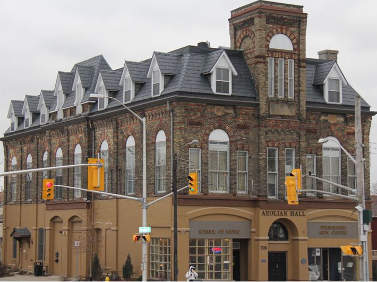 The Beatles also brought "Rock And Roll Music" into a recording studio on November 25th, 1964 for their final appearance on the BBC radio show "Saturday Club." This recording was produced by Bernie Andrews in Studio One of Aeolian Hall in London between 7 and 10:30 pm and was broadcast a month later on December 26th between 10 am and 12 noon. The Beatles also brought "Rock And Roll Music" into a recording studio on November 25th, 1964 for their final appearance on the BBC radio show "Saturday Club." This recording was produced by Bernie Andrews in Studio One of Aeolian Hall in London between 7 and 10:30 pm and was broadcast a month later on December 26th between 10 am and 12 noon.
 Interestingly, their final live performance on August 29th, 1966 at Candlestick Park began with a truncated rendition of "Rock And Roll Music" that only featured two verses instead of four. As detailed in Keith Badman's book "The Beatles Off The Record," the group's press officer Tony Barrow recalls: "There was a sort of end of term spirit thing going on, and there was also this kind of feeling amongst all of us around The Beatles, that this might just be the last concert that they will ever do. I remember Paul, casually, at the very last minute, saying, 'Have you got your cassette recorder with you?' and I said, 'Yes, of course.' Paul then said, 'Tape it, will you? Tape the show,' which I did, literally just holding the microphone up in the middle of the field. As a personal souvenir of the occasion, it was a very nice thing to have." Even though Tony Barrow insists that he only made one copy of the tape, which he had locked in a drawer in his London office, and gave the original to Paul, this recording has been available on bootleg releases throughout the years. Interestingly, their final live performance on August 29th, 1966 at Candlestick Park began with a truncated rendition of "Rock And Roll Music" that only featured two verses instead of four. As detailed in Keith Badman's book "The Beatles Off The Record," the group's press officer Tony Barrow recalls: "There was a sort of end of term spirit thing going on, and there was also this kind of feeling amongst all of us around The Beatles, that this might just be the last concert that they will ever do. I remember Paul, casually, at the very last minute, saying, 'Have you got your cassette recorder with you?' and I said, 'Yes, of course.' Paul then said, 'Tape it, will you? Tape the show,' which I did, literally just holding the microphone up in the middle of the field. As a personal souvenir of the occasion, it was a very nice thing to have." Even though Tony Barrow insists that he only made one copy of the tape, which he had locked in a drawer in his London office, and gave the original to Paul, this recording has been available on bootleg releases throughout the years.
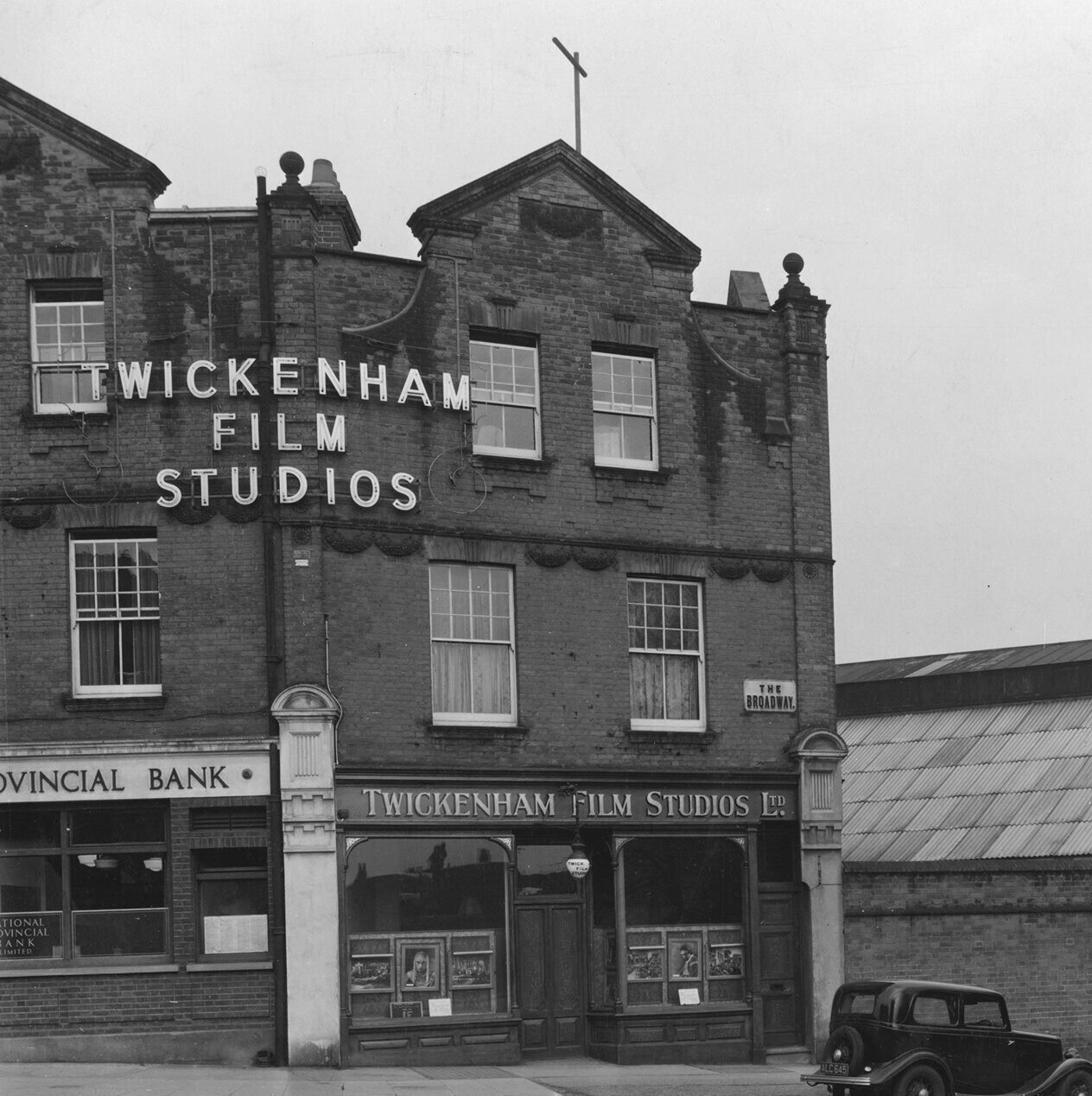 Also noteworthy of mention are two renditions of "Rock And Roll Music" that The Beatles performed in London's Twickenham Film Studios in early January of 1969 during the rehearsals for what became the "Let It Be" album and film. The first was recorded on January 7th, which was quite a spirited performance with Ringo focusing on the toms during the verses, and the second was done on the following day, January 8th. Neither of these versions have been officially released. Also noteworthy of mention are two renditions of "Rock And Roll Music" that The Beatles performed in London's Twickenham Film Studios in early January of 1969 during the rehearsals for what became the "Let It Be" album and film. The first was recorded on January 7th, which was quite a spirited performance with Ringo focusing on the toms during the verses, and the second was done on the following day, January 8th. Neither of these versions have been officially released.
Song Structure and Style
 The Beatles here convincingly transformed this somewhat laid-back Chuck Berry anthem into a frantic, thunderous rendition leaving the listener hardly a chance to take a breath. The relaxed swing beat of the original is pushed aside for a straight-forward 4/4 hard-driving rock beat. The Beatles also chose to raise the key from the somewhat monotone E major of the original to an exhilarating A major, which pins Lennon to the top of his vocal range. The Beatles here convincingly transformed this somewhat laid-back Chuck Berry anthem into a frantic, thunderous rendition leaving the listener hardly a chance to take a breath. The relaxed swing beat of the original is pushed aside for a straight-forward 4/4 hard-driving rock beat. The Beatles also chose to raise the key from the somewhat monotone E major of the original to an exhilarating A major, which pins Lennon to the top of his vocal range.
Apart from these obvious differences, The Beatles keep to the same basic structure of the original, namely 'chorus/ verse/ chorus/ verse/ chorus/ verse/ chorus/ verse/ chorus' (or ababababa). No instrumental or solo section is required, since the fast moving multiple verses keep the tension flowing from start to finish as it should.
 The song begins with a simple introduction which actually only consists of a guitar cue to set the rhythm of the song. Interestingly, Lennon chooses to use the E7 chord instead of the signature A chord, which differs from Chuck Berry's use of the signature E chord. This takes us directly into the fourteen measure first verse, which follows the usual 12-bar blues pattern except for a reprise of the last two measures to repeat the phrase "if you want to dance with me." All four musicians jump right into full-throttle from the downbeat of the first measure, only letting up for a full "break" on the fourteenth measure, which actually works as the beginning of the first verse with the line "I've got no kick against...". The song begins with a simple introduction which actually only consists of a guitar cue to set the rhythm of the song. Interestingly, Lennon chooses to use the E7 chord instead of the signature A chord, which differs from Chuck Berry's use of the signature E chord. This takes us directly into the fourteen measure first verse, which follows the usual 12-bar blues pattern except for a reprise of the last two measures to repeat the phrase "if you want to dance with me." All four musicians jump right into full-throttle from the downbeat of the first measure, only letting up for a full "break" on the fourteenth measure, which actually works as the beginning of the first verse with the line "I've got no kick against...".
 The first verse consists of eight measures as do all four breathless verses. The downbeat of the first measure brings the full band back into the picture as Lennon completes his lyrical phrase with the words "modern jazz." A similar "break" occurs on the eighth and final measure of the verse, which allows John to belt out the segue back into the chorus with the words, "that's why I go for that...". This identical "break" pattern follows every verse and chorus until the end of the song. The first verse consists of eight measures as do all four breathless verses. The downbeat of the first measure brings the full band back into the picture as Lennon completes his lyrical phrase with the words "modern jazz." A similar "break" occurs on the eighth and final measure of the verse, which allows John to belt out the segue back into the chorus with the words, "that's why I go for that...". This identical "break" pattern follows every verse and chorus until the end of the song.
One interesting detail is the somewhat rumba-sounding beat that accompanies the fourth verse, which goes well with the lyrics that mention the "tango," the "mambo" and the "congo." John stresses different syllables in the word "piano" toward the end of this verse as well, Chuck Berry following the pattern of the preceding words with "pi-A-no" while Lennon playfully favors saying "PI-a-NO."
 The last chorus puts the final touch on the song by replacing the "break" with an instrumental "cha-cha-cha" as does the original recording. After such an exhilarating and exhausting rendition, George Martin wisely chooses to follow this with the mellow "I'll Follow The Sun," which allows our heart rate to go back to normal. The last chorus puts the final touch on the song by replacing the "break" with an instrumental "cha-cha-cha" as does the original recording. After such an exhilarating and exhausting rendition, George Martin wisely chooses to follow this with the mellow "I'll Follow The Sun," which allows our heart rate to go back to normal.
 While all four Beatles give a wonderfully spontaneous performance on this song, the tip-of-the-hat mostly goes to John Lennon for his urgent and convincing vocal delivery. After approximately seven-and-a-half hours in the recording studio, which included mastering his excellent "I Feel Fine," he barely had it in him to scrape through the high-pitched "Rock And Roll Music" in its entirely. We can all hear him belting out the final chorus with every fiber of his being but not giving up. The listener has the sensation of cheering him on to the finish line, and as he painfully hits his final notes on "if you want to dance with me" we all feel we want to congratulate him for a job well done. He surely must have been grateful he didn't have to do another take of the song! While all four Beatles give a wonderfully spontaneous performance on this song, the tip-of-the-hat mostly goes to John Lennon for his urgent and convincing vocal delivery. After approximately seven-and-a-half hours in the recording studio, which included mastering his excellent "I Feel Fine," he barely had it in him to scrape through the high-pitched "Rock And Roll Music" in its entirely. We can all hear him belting out the final chorus with every fiber of his being but not giving up. The listener has the sensation of cheering him on to the finish line, and as he painfully hits his final notes on "if you want to dance with me" we all feel we want to congratulate him for a job well done. He surely must have been grateful he didn't have to do another take of the song!
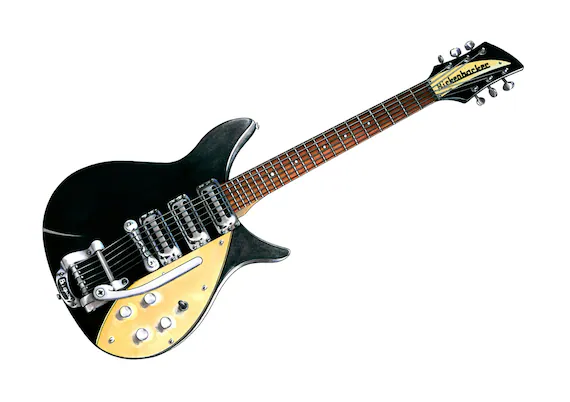 The highlight musically shows up in the form of George Martin's piano work. His harmonic runs on the lines "if you want to dance with me" throughout the song are an anticipated feature of each chorus, as well as his 'push' after the word "piano" at the end of the fourth verse. John and George's rhythm guitars work nicely with the piano to fill out the meat of the sound, as Paul's simple bass work gives the song depth. Ringo pounds away at full-tilt without much need of extensive drums fills, but keeps the song 'in the pocket' with his tight breaks and accents. The Beatles were well acquainted with the song, having performed it over the past five years, and it definitely shows. The highlight musically shows up in the form of George Martin's piano work. His harmonic runs on the lines "if you want to dance with me" throughout the song are an anticipated feature of each chorus, as well as his 'push' after the word "piano" at the end of the fourth verse. John and George's rhythm guitars work nicely with the piano to fill out the meat of the sound, as Paul's simple bass work gives the song depth. Ringo pounds away at full-tilt without much need of extensive drums fills, but keeps the song 'in the pocket' with his tight breaks and accents. The Beatles were well acquainted with the song, having performed it over the past five years, and it definitely shows.
 Lyrically, the song simply depicts the singer's preference for "rock and roll" as opposed to "modern jazz," "symphonies," "jamboree," "tango," "mambo" or "congo" music. If you want to dance with the singer, "it's gotta be rock and roll music." Lyrically, the song simply depicts the singer's preference for "rock and roll" as opposed to "modern jazz," "symphonies," "jamboree," "tango," "mambo" or "congo" music. If you want to dance with the singer, "it's gotta be rock and roll music."
Interestingly, John Lennon appears to sing "it's got a back beat; you can't blues it," while the original clearly states "you can't lose it." This apparently is another case of singing what they thought they heard on their copy of the record.
American Releases
 Capitol released their first composite album to feature tracks from the British "Beatles For Sale" album on December 15th, 1964, entitled "Beatles '65." While the previous Capitol album "Something New" just missed hitting the top of the Billboard albums chart (#2 under the soundtrack album to "A Hard Day's Night"), this December release topped the Billboard album chart for nine straight weeks. "Beatles '65" then appeared as an individual compact disc on January 21st, 2014, both the mono and stereo versions of the album contained on a single CD. Capitol released their first composite album to feature tracks from the British "Beatles For Sale" album on December 15th, 1964, entitled "Beatles '65." While the previous Capitol album "Something New" just missed hitting the top of the Billboard albums chart (#2 under the soundtrack album to "A Hard Day's Night"), this December release topped the Billboard album chart for nine straight weeks. "Beatles '65" then appeared as an individual compact disc on January 21st, 2014, both the mono and stereo versions of the album contained on a single CD.
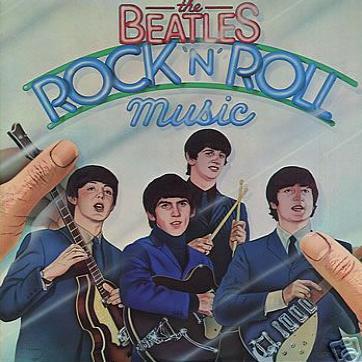 While the song wasn't quite popular enough to be included on the "1962-1966" greatest hits package (aka "The Red Album"), it became the title track to Capitol's companion set "Rock 'n' Roll Music." This highly successful double album, which was released on June 6th, 1976, peaked at #2 on the Billboard album chart. George Martin was consulted regarding the preparation of this album and, with access to only the Capitol mixes, decided it was necessary to reverse the right and left channels of the original stereo mix of this song for this album, the bass frequencies being raised throughout as well. The label decided to continue to generate sales from this package by splitting up the discs and releasing them individually as budget albums. "Rock 'n' Roll Music, Volume 1," which was released on October 27th, 1980, contained the song "Rock And Roll Music." While the song wasn't quite popular enough to be included on the "1962-1966" greatest hits package (aka "The Red Album"), it became the title track to Capitol's companion set "Rock 'n' Roll Music." This highly successful double album, which was released on June 6th, 1976, peaked at #2 on the Billboard album chart. George Martin was consulted regarding the preparation of this album and, with access to only the Capitol mixes, decided it was necessary to reverse the right and left channels of the original stereo mix of this song for this album, the bass frequencies being raised throughout as well. The label decided to continue to generate sales from this package by splitting up the discs and releasing them individually as budget albums. "Rock 'n' Roll Music, Volume 1," which was released on October 27th, 1980, contained the song "Rock And Roll Music."
 The first time the original British "Beatles For Sale" album was made available in the US was the "Original Master Recording" vinyl edition released through Mobile Fidelity Sound Lab in February of 1987. This album included "Rock And Roll Music" and was prepared utilizing half-speed mastering technology from the original master tape on loan from EMI. This version of the album was only available for a short time and is quite collectible today. The first time the original British "Beatles For Sale" album was made available in the US was the "Original Master Recording" vinyl edition released through Mobile Fidelity Sound Lab in February of 1987. This album included "Rock And Roll Music" and was prepared utilizing half-speed mastering technology from the original master tape on loan from EMI. This version of the album was only available for a short time and is quite collectible today.
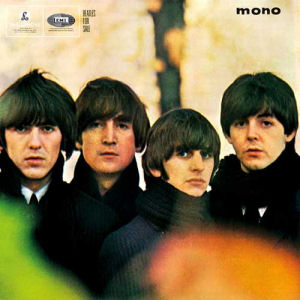 February 26th, 1987 saw the full British "Beatles For Sale" album released on compact disc for the first time, the vinyl edition released on July 21st, 1987. While these releases were in mono only, the remastered stereo version came out on CD on September 9th, 2009 and on vinyl on November 13th, 2012. February 26th, 1987 saw the full British "Beatles For Sale" album released on compact disc for the first time, the vinyl edition released on July 21st, 1987. While these releases were in mono only, the remastered stereo version came out on CD on September 9th, 2009 and on vinyl on November 13th, 2012.
 Another mono release in the US was on June 30th, 1992. The box set "Compact Disc EP Collection" came out on this date, "Rock And Roll Music" being included therein because of it appearing on the EP entitled "Beatles For Sale," which was originally released on vinyl in Britain on April 6th, 1965. Another mono release in the US was on June 30th, 1992. The box set "Compact Disc EP Collection" came out on this date, "Rock And Roll Music" being included therein because of it appearing on the EP entitled "Beatles For Sale," which was originally released on vinyl in Britain on April 6th, 1965.
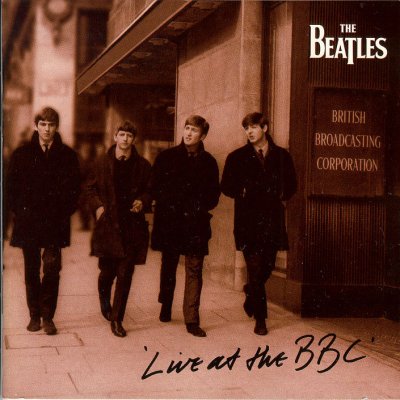 The next release of the song was a version The Beatles recorded for the BBC radio program "Saturday Club" on December 25th, 1964, which was broadcast the next day. The Apple double album "Live At The BBC," which was released on December 6th, 1994 and peaked at #3 on the Billboard album chart, contained this rendition. On November 11th, 2013, this album was remastered, re-packaged and re-released. The next release of the song was a version The Beatles recorded for the BBC radio program "Saturday Club" on December 25th, 1964, which was broadcast the next day. The Apple double album "Live At The BBC," which was released on December 6th, 1994 and peaked at #3 on the Billboard album chart, contained this rendition. On November 11th, 2013, this album was remastered, re-packaged and re-released.
 Apple then underwent releasing three double-disc volumes of Anthology albums during the next two years, the second volume "Anthology 2" being released on March 19th, 1996. A noteworthy live performance of "Rock And Roll Music" was contained in this set, which dated back to the June 30th, 1966 concert at the Nippon Budokan Hall in Tokyo, Japan. This rather sloppy performance, especially vocally, shows the group in less than top form toward the end of their touring days. The album debuted in the #1 spot on the Billboard chart on April 6th of that year. Apple then underwent releasing three double-disc volumes of Anthology albums during the next two years, the second volume "Anthology 2" being released on March 19th, 1996. A noteworthy live performance of "Rock And Roll Music" was contained in this set, which dated back to the June 30th, 1966 concert at the Nippon Budokan Hall in Tokyo, Japan. This rather sloppy performance, especially vocally, shows the group in less than top form toward the end of their touring days. The album debuted in the #1 spot on the Billboard chart on April 6th of that year.
 A box set titled "The Capitol Albums, Vol. 1" was released on November 15th, 2004 to re-introduce the first four Capitol albums to the US market as originally heard in 1964. The stereo and mono versions of the "Beatles '65" album, including "Rock And Roll Music," were included in this set, which reached #35 on the Billboard album chart. A box set titled "The Capitol Albums, Vol. 1" was released on November 15th, 2004 to re-introduce the first four Capitol albums to the US market as originally heard in 1964. The stereo and mono versions of the "Beatles '65" album, including "Rock And Roll Music," were included in this set, which reached #35 on the Billboard album chart.
On September 9th, 2009, an excellent remastering of the 1964 mono mix was released on the new compact disc box set "The Beatles In Mono," which most sources will recommend as the best way to hear the song. The vinyl edition of this box set was first released on September 9th, 2014.
Live Performances
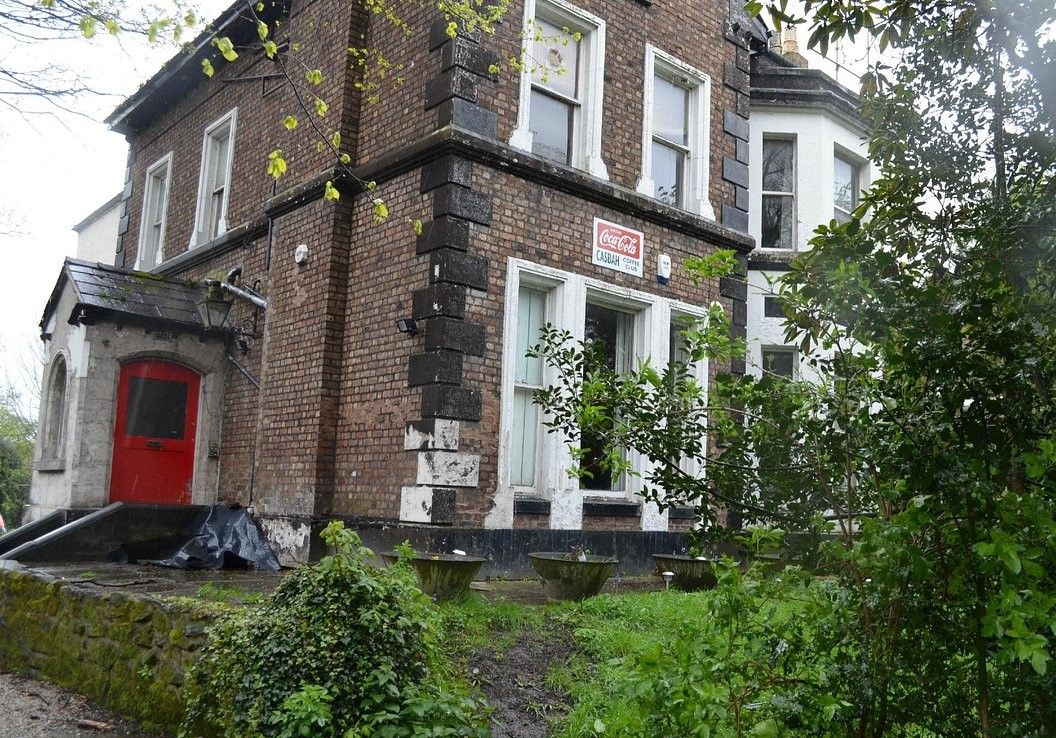 "Rock And Roll Music" has one of the longest performances lives of any Beatles song in their repertoire, spanning a total of eight years from 1959 to 1966. Only "Long Tall Sally," which entered their set list way back in 1957 and continued to be performed until 1966, beats this record. "Rock And Roll Music" has one of the longest performances lives of any Beatles song in their repertoire, spanning a total of eight years from 1959 to 1966. Only "Long Tall Sally," which entered their set list way back in 1957 and continued to be performed until 1966, beats this record.
Nonetheless, "Rock And Roll Music" began its performance life while the group, then named The Quarrymen, played at Mona Best's Casbah Coffee Club in Liverpool from September 5th through October 10th, 1959. While other Chuck Berry classics were performed by the band as early as 1957 (such as "Roll Over Beethoven" and "Sweet Little Sixteen"), John waited a little longer to introduce this song into their repertoire.
 Throughout their formative years before they landed a contract with EMI in 1962, they periodically included the song in their set lists, especially during the long hours put in during their Hamburg, Germany visits and their residency at the Cavern Club in Liverpool. They failed to include the song in their audition for Decca Records on January 1st, 1962, as well as their first album, recorded on February 11th, 1963, no doubt because of it being considered too raucous for the time. Throughout their formative years before they landed a contract with EMI in 1962, they periodically included the song in their set lists, especially during the long hours put in during their Hamburg, Germany visits and their residency at the Cavern Club in Liverpool. They failed to include the song in their audition for Decca Records on January 1st, 1962, as well as their first album, recorded on February 11th, 1963, no doubt because of it being considered too raucous for the time.
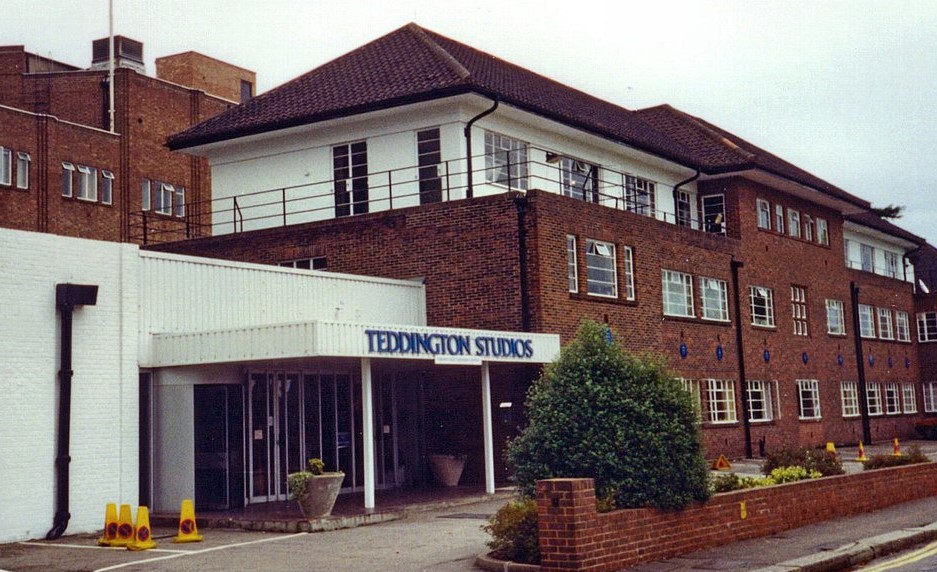 While it took a back seat during most of 1963, they reinstituted the song in earnest with its impending release on the British "Beatles For Sale" album. First, they lip-synced a filmed performance of the song on November 14th, 1964 at Teddington Studio Centre for the British TV show "Thank Your Lucky Stars" (renamed "Lucky Stars Special" because of The Beatles appearance), which was broadcast on November 21st of that year. While it took a back seat during most of 1963, they reinstituted the song in earnest with its impending release on the British "Beatles For Sale" album. First, they lip-synced a filmed performance of the song on November 14th, 1964 at Teddington Studio Centre for the British TV show "Thank Your Lucky Stars" (renamed "Lucky Stars Special" because of The Beatles appearance), which was broadcast on November 21st of that year.
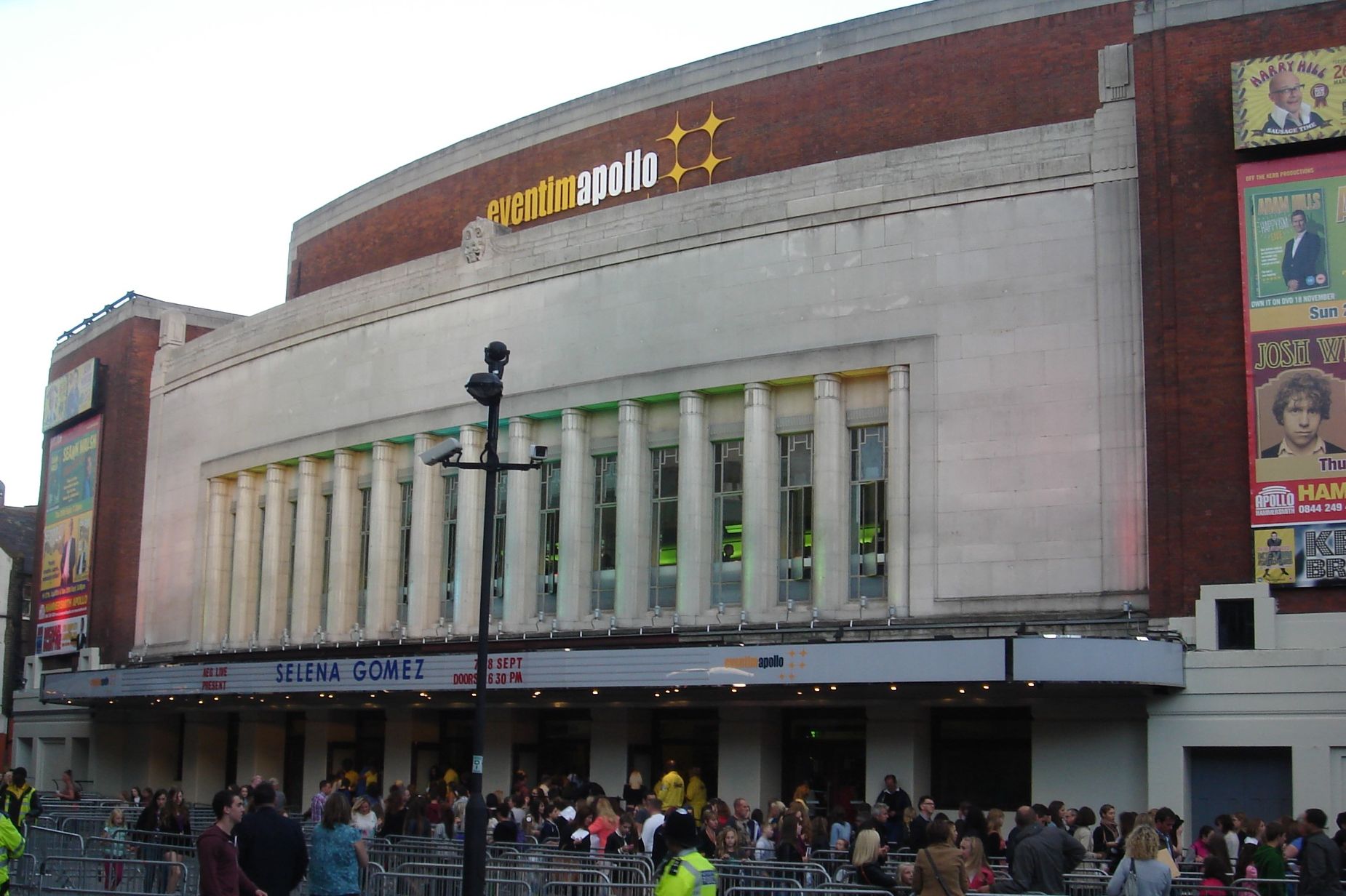 Brian Epstein's "Another Beatles Christmas Show," held at the Hammersmith Odeon Cinema from December 24th through January 16th, 1965, included the song in its set list. After filming their second motion picture "Help!", they included "Rock And Roll Music" in their fourteen-day European tour, which took them through France and Spain. The first day's performances on this tour in Paris were recorded for transmission on radio and television in that country. Brian Epstein's "Another Beatles Christmas Show," held at the Hammersmith Odeon Cinema from December 24th through January 16th, 1965, included the song in its set list. After filming their second motion picture "Help!", they included "Rock And Roll Music" in their fourteen-day European tour, which took them through France and Spain. The first day's performances on this tour in Paris were recorded for transmission on radio and television in that country.
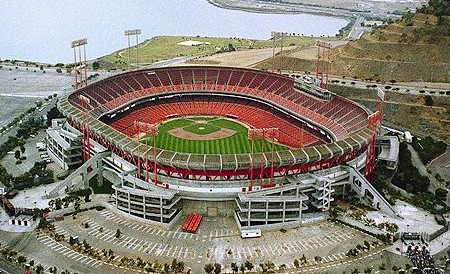 Their brief international tour of 1966 (June 24th through July 4th), which took them to West Germany, Japan and then The Philippines, saw them resurrect this classic song as the opening number. August 12th saw The Beatles begin what became their final tour of all time, this one at hot spots in America. Not wanting to rehearse new material for this tour, they basically followed the exact set list as their previous international tour which started off with "Rock And Roll Music." The August 14th show in Cleveland, Ohio was held up midway because of a rioting crowd, but after the audience settled down 30 minutes later, the Beatles re-appeared to do a second performance of "Rock And Roll Music" before continuing the planned set list. Their last ever concert performance at Candlestick Park in San Francisco, California on August 29th, 1966 also began with this anthem to the joys of 'rock and roll.' Their brief international tour of 1966 (June 24th through July 4th), which took them to West Germany, Japan and then The Philippines, saw them resurrect this classic song as the opening number. August 12th saw The Beatles begin what became their final tour of all time, this one at hot spots in America. Not wanting to rehearse new material for this tour, they basically followed the exact set list as their previous international tour which started off with "Rock And Roll Music." The August 14th show in Cleveland, Ohio was held up midway because of a rioting crowd, but after the audience settled down 30 minutes later, the Beatles re-appeared to do a second performance of "Rock And Roll Music" before continuing the planned set list. Their last ever concert performance at Candlestick Park in San Francisco, California on August 29th, 1966 also began with this anthem to the joys of 'rock and roll.'
Conclusion
 In May of 1957, Chuck Berry recorded a song he had written that suggested that a new musical genre still in its infancy was now the dominant force for the youth of that day. Seven years later, in October of 1964, The Beatles recorded the same song but no longer as a suggestion. By that time it was a proven fact that 'rock and roll' was truly here to stay, and John Lennon sang it with the convincing urgency that the song deserved. "Rock And Roll Music" earns its place among the likes of "Twist And Shout" and "Money (That's What I Want)" as evidence that The Beatles could take a great song and make it better. In May of 1957, Chuck Berry recorded a song he had written that suggested that a new musical genre still in its infancy was now the dominant force for the youth of that day. Seven years later, in October of 1964, The Beatles recorded the same song but no longer as a suggestion. By that time it was a proven fact that 'rock and roll' was truly here to stay, and John Lennon sang it with the convincing urgency that the song deserved. "Rock And Roll Music" earns its place among the likes of "Twist And Shout" and "Money (That's What I Want)" as evidence that The Beatles could take a great song and make it better.
Song Summary
"Rock And Roll Music"
Written by: Chuck Berry
Instrumentation (most likely):
- John Lennon - Lead Vocals, Rhythm Guitar (1964 Rickenbacker 325)
- Paul McCartney - Bass Guitar (1963 Hofner 500/1)
- George Harrison - Lead Guitar (1963 Gretsch 6119 Tennessean)
- Ringo Starr - Drums (1964 Ludwig Super Classic Black Oyster Pearl)
- George Martin - Piano (1905 Steinway Vertegrand upright)
Written and compiled by Dave Rybaczewski
|
IF YOU WOULD LIKE TO MAKE A DONATION TO KEEP THIS WEBSITE UP AND RUNNING, PLEASE CLICK BELOW!
|